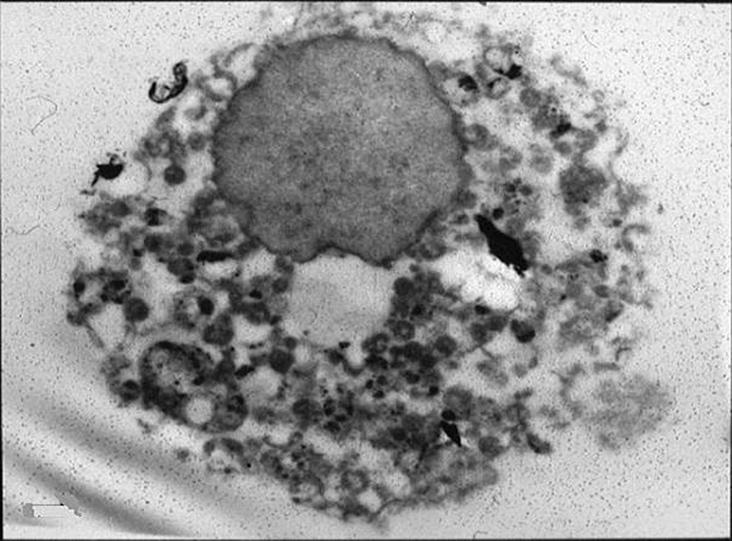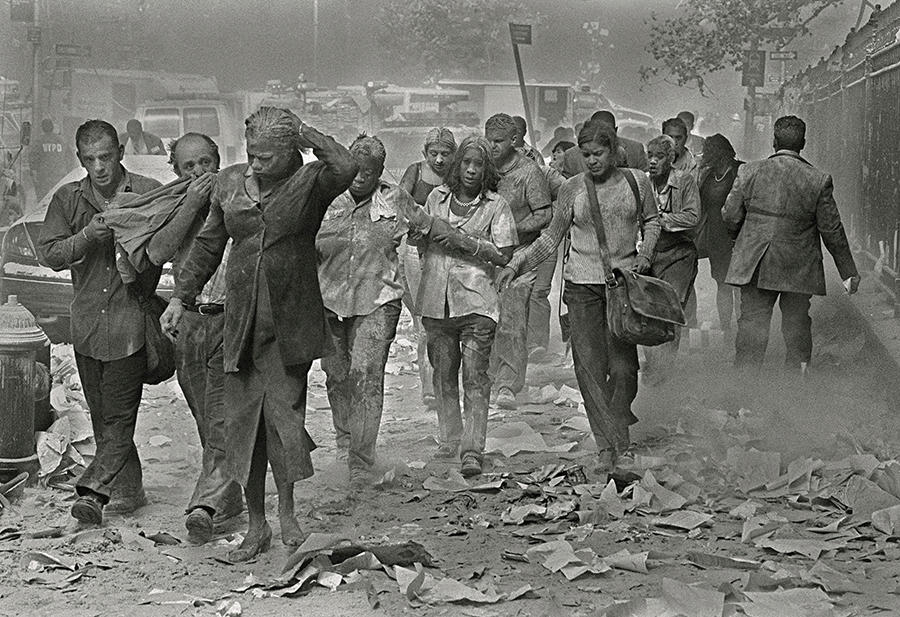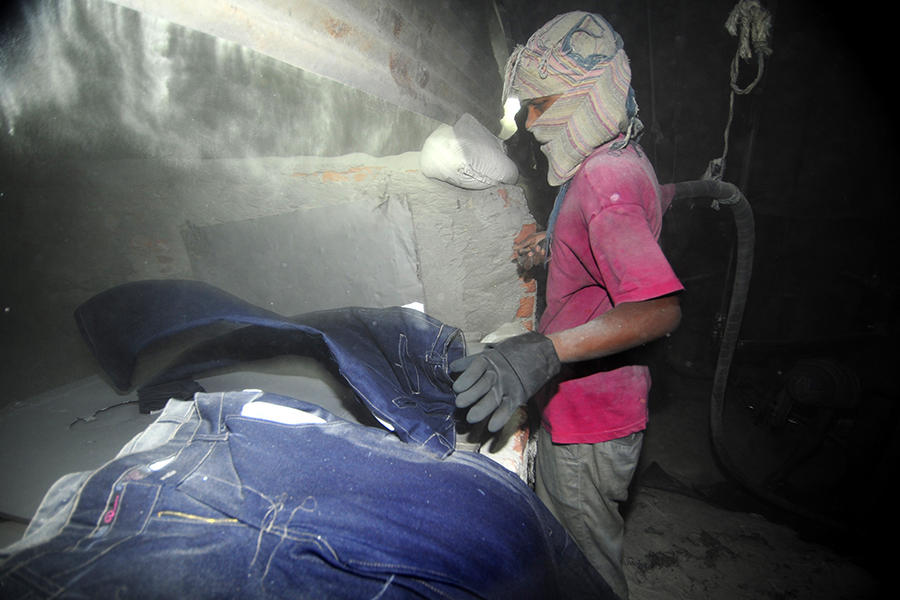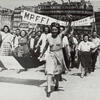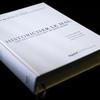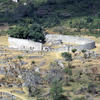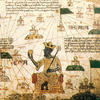You are here
Using History to Heal

“We saved our first patient!” enthuses historian Paul-André Rosental of the Centre d’Études Européennes de Sciences Po.1 His project SILICOSIS, launched three years ago, is unusual but promising: it consists in reconstructing the history of diseases in order to diagnose them more easily. The ultimate goal is to use social sciences to help healing. The first success story dates back to 2013, when a man of 78 was admitted to the Avicenne hospital in Bobigny (near Paris) in an emergency, with acute respiratory distress syndrome, a worrying heart condition and an abnormal accumulation of liquid around the lungs and heart. Antibiotics did not help. Dr. Marianne Kambouchner, an anatomic pathologist, was then called upon to analyze biopsies from the patient. As a medical partner in the SILICOSIS project, she was aware of how poorly dust toxicity had been taken into account since the 1930s. So she looked at the case file from another angle: What if the patient, a former mason, had developed an illness related to the dust inhaled during his career, and if that condition had been reawakened by the inhalation of soot from his chimney, which he had recently swept? Further tests confirmed this hypothesis: the man was suffering from chronic silicosis (an irreversible lung disease caused by silica dust); and his recent exposure had caused an acute attack of systemic lupus erythematosusFermerA chronic inflammatory disease that can affect many organs (skin, kidneys, joints, lungs and nervous system). This autoimmune disease is characterized by successive symptomatic periods and remission phases. It is also known as lupus., an autoimmune pathology suspected of being related to the inhalation of mineral dustsFermerLightweight inorganic particles that can remain suspended in the air. Because of their small size, fine particles (with a diameter below 2.5 microns) and ultrafine or nanoparticles (below 0.1 microns) can penetrate very deep into the lungs. . The treatment was changed following this diagnosis. A high dose of corticosteroids was prescribed, which got the patient out of the acute phase and back on his feet.
A disease description “negotiated” with the mining industry
The SILICOSIS project, which is supported by the European Union, is based on a simple realization: one only finds what one is looking for. Delving into knowledge that has been forgotten, abandoned or voluntarily set-aside reopens paths that have been neglected. The project stems from an initial investigation on silicosis led by Paul-André Rosental in 2005. This ailment has killed tens of thousands of workers in France since 1945 and is still one of the most serious work-related diseases today, affecting tens of millions of professionals across the world. To study the history of this illness, the researcher went back to the 1930s. Under the pressure of the trade unions, the International Labour OfficeFermerThe International Labour Office is the permanent secretariat of the International Labour Organization, an international body created in 1919 to work for social justice and lasting peace. It played a major role in the establishment of many national social security systems. had asked medical experts to provide a clear and stable definition of silicosis so that it could be registered as an occupational illness, thus enabling affected workers to claim damages. However, in a number of countries, employers were responsible for occupational illnesses and related compensation. In order to reduce the number of settlements, mining companies and their medical experts obtained a minimal definition of the disease.
Their influence proved to be decisive: silicosis was finally defined as a pulmonary condition acquired from moderate but long-term exposure to silica dust. Although this definition allowed affected workers to obtain compensation and prevention policies to be established, several issues were overlooked. First, the early stages of lung disease in workers were not recognized as silicosis. Moreover, the effects of brief but intense exposure to silica, and intoxication by other types of dust (such as coal and metal dust) were ignored.
Finally, doctors became used to looking for silicosis solely in patients from the mining industry, even though other sectors such as building and agriculture were also affected. “Eighty-five years on, medical knowledge of silica and dusts in general is still influenced by the incomplete definition of the 1930s," says Paul-André Rosental.
From scouring powder to September 11th
In 2010, Dr. Michel Vincent, then head of pneumology at Saint-Joseph Saint-Luc Hospital in Lyon, took an interest in the work of the historian—with good reason. In the early 1990s, an unusual event had left a strong impression on him. Within the span of a few weeks, two young women suffering from severe breathing problems were admitted to his service. Much to his surprise, the doctor realized that both patients, who had never worked in a mine, were suffering from an acute form of silicosis. One of the cases proved fatal. The specialist was intrigued and started to investigate: he found out that the two girls had become intoxicated from sniffing scouring powder, a cleaning product for kitchens and bathrooms that contains a high proportion of silica (the formulation of this cleaning product was modified as a result2).
Since this tragic incident, the doctor has been wary of the effects of mineral dust, which he believes are still largely underestimated. In fact, small groups of sufferers are periodically diagnosed. This was the case, for example, for New Yorkers exposed to the dust cloud produced by the collapse of the Twin Towers on September 11th, 2001. The epidemiological monitoring set up after the attacks showed that those exposed were more likely than others to suffer from respiratory ailments: one in ten developed asthma, which is three times the national average.3 More intriguing still, some rare conditions are also more common in this group, including forms of sarcoidosis, an inflammatory disease that is usually benign and curable but which can in rare cases cause serious pulmonary, cardiac or neurological damage.
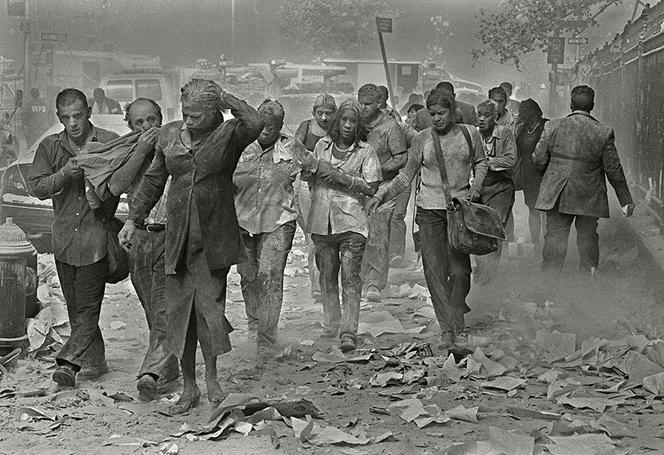
Kitchen fitters working with artificial stone provide another example. This composite of resin and quartz, which appeared at the end of the 1980s, is used for worktops in fitted kitchens. At the start of the 2010s, researchers pointed to the abnormally high rate of silicosis in workers who wore no protective equipment to cut this material. Yet this string of diseases was discovered at random, on a case-by-case basis, and it is not included in conventional epidemiological studies. Existing databases do not allow for detailed cross-referencing of information on these diseases and cases of dust exposure, whether professional, domestic or environmental. Hence the interest of building on the knowledge collected in the early decades of the 20th century, before employers drew a veil over the issue.
Reopening the sarcoidosis case file
The SILICOSIS project on dust toxicity finally saw the light of day when Paul-André Rosental, the historian from Paris, and Michel Vincent, the doctor from Lyon, got together. By cross-referencing medical research with historical data, it allows forgotten paths to be uncovered. One leg of the project, known as MINASARC, focuses on sarcoidosis. The cause of this disease remains unknown: researchers have suggested genetic predispositions, the presence of allergenic agents and/or environmental factors, none of which have been clearly identified. However, sarcoidosis leads to the development of pulmonary lesions that resemble those found in the first stages of silica poisoning—and are precisely those left out by the experts in the 1930s. In addition, the consequences of the collapse of the World Trade Center, which pointed to the impact of dusts on the development of this disease, provide further evidence to that effect. The question therefore is whether sarcoidosis is one of the partially dust-related conditions that were no longer being investigated due to the compromise made in the 1930s.
To reopen the case, a medical investigation was launched in spring 2015 with 20 patients suffering from sarcoidosis and 20 healthy subjects. All are undergoing three types of tests. To start with, a highly detailed study designed and conducted by sociologist Catherine Cavalin, a specialist in statistical health surveys, makes it possible to trace exposure to dusts over a person’s lifetime. It includes questions such as: “Do you smoke hand-rolled cigarettes? Have you been exposed to feathers or hay? Do you do home improvement work involving sanding? Do you use clay-based face packs or have you had a tattoo?” etc. As for Dr. Vincent, he now has an electron microscope capable of detecting the presence of mineral particles. This model, used by forensic experts to study bullet impact, shows the exact state of particles extracted from the lungs of the 40 subjects by bronchoalveolar lavage.
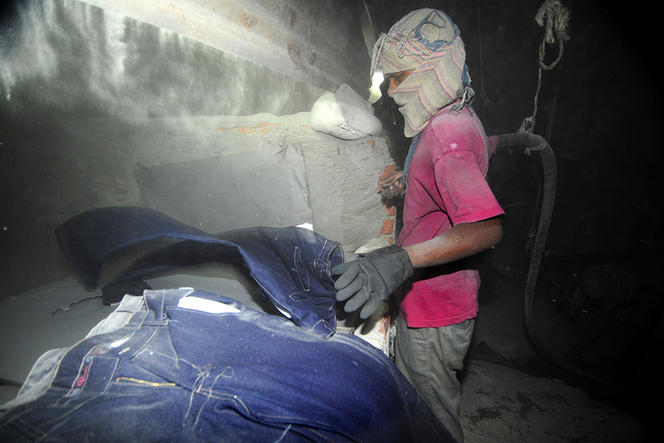
Finally, a team of anatomic pathologists led by Professor Jean-François Bernaudin (Tenon university hospital, Paris), study the changes in the anatomical pathology of lung cells in sarcoidosis sufferers so as to compare them with those observed in silicosis. Cross-referencing the three elements of the investigation will help determine whether the subjects suffering from the disease display any common characteristics of dust exposure.
Results expected
The researchers working on the SILICOSIS program are expecting tangible results. In contrast to silicosis, which has irreversible effects on the lungs, many autoimmune diseases, like sarcoidosis or systemic lupus, have been known to show longer or shorter remission phases that may sometimes be permanent. By identifying the particles that contribute to triggering immune reactions, doctors can help patients have greater control of their condition. Furthermore, the SILICOSIS team has also designed a questionnaire about dusts for use in medical consultations. On a broader scale, prevention strategies can be envisaged, including the wearing of masks for certain professional and domestic activities presently carried out without protection through ignorance of their potential toxicity, or even the exclusion of certain activities for patients at risk.
Does this mean that hospitals will eventually employ another type of doctor— doctors in history? Paul-André Rosental looks amused, although in his opinion, this scenario is not quite as far-fetched as it seems. By looking back at how our knowledge and ignorance were built, cases of diseases of unknown origin could be reopened, thus offering fresh perspectives and new hope.
Related: A New Hope for Lupus Treatment
- 1. CNRS / Sciences Po joint research unit.
- 2. C. Dumontet, M. Vincent, E. Laennec, B. Girodet, D. Vitrey, D. Meram and L. Vanstraaten, “Silicosis due to inhalation of domestic cleaning powder”, Lancet, 1991. (338)8774: 1085.
- 3. New York City - What we know about the health effects of 9/11 - http://www.nyc.gov/html/doh/wtc/html/know/know.shtml and S.E. Perlman, S. Friedman, S. Galea et al., “Short-term and medium-term health effects of 9/11,” Lancet, 2011.(378)9794:925-34.
Explore more
Author
Working since 2009 at the CRH-Centre de recherches historiques1, Hélène Frouard heads research projects on the history of housing as part of the collective work of the Esopp team. In paralllel, she continues to promote and disseminate scientific culture to a number of audiences (...




